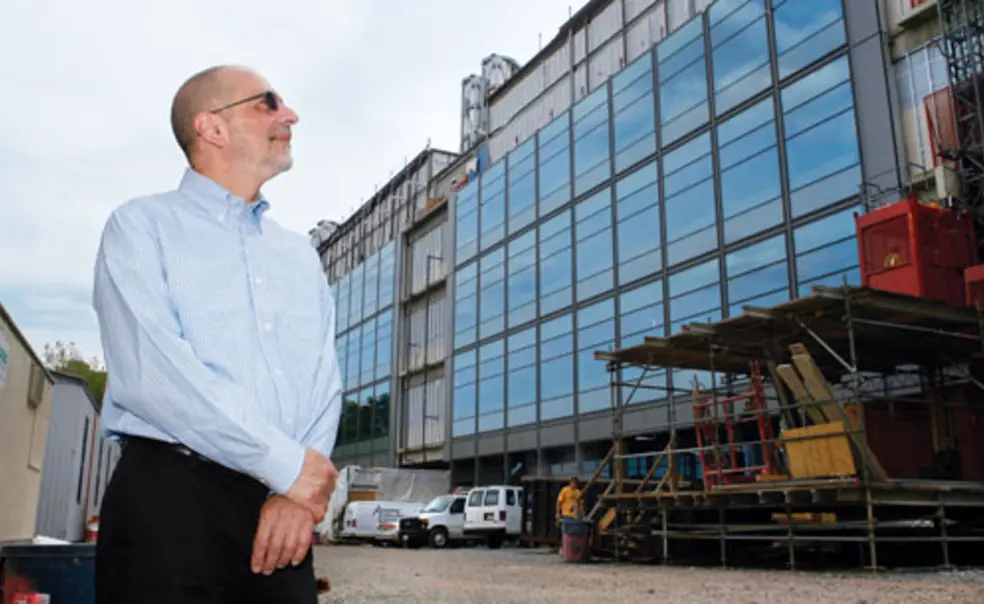If you build it, they will come.
Such may be the case for the new chemistry building going up on Washington Road — a state-of-the-art facility that is serving as a valuable tool to recruit the best and the brightest to Princeton’s chemistry department.
The department’s current home, Frick Laboratory, was built in 1927, in an era far removed from today’s high-tech, interdisciplinary scientific endeavors.
“While it is beautiful on the outside, the building is hard to work in,” said department chairman Robert Cava. “It is a labyrinth of renovation upon renovation, designed in a complex and inefficient way for a science building.” As a result, Cava said, “It is hard to recruit people into this building.”
The new 263,000-square-foot chemistry building, designed by London-based Hopkins Architects in conjunction with Payette Associates of Boston, is scheduled to open next to Princeton Stadium in the fall of 2010. Connected via tunnel to Jadwin Hall and by pedestrian bridge to the life-sciences facilities just across Washington Road, the facility will herald a new era of chemistry at Princeton.
“Shirtsleeve access to collaborators in other departments, including physics, genomics, and biology, is very important,” Cava said.
The building will feature a variety of sustainable technologies, including self-closing high-efficiency fume hoods and solar panels. University financial reports list the cost of the building at $380 million, which is expected to be funded in its entirety by royalties from an anticancer drug called Alimta, the brainchild of Edward C. Taylor Jr., the A. Barton Hepburn Professor of Organic Chemistry emeritus.
Beyond improving the quality of life for people who are extraordinarily sick, Cava said, Alimta “has allowed us to change the direction of the chemistry department and move forward.”
The chemistry department’s transformation began with guidance from a faculty committee convened in 2005 and led by William Russel, chemical-engineering professor and dean of the Graduate School. In addition to laying out plans for the new facility, the group identified directions for the growth of the department that would place it at the forefront of chemistry research, with an emphasis on chemical biology and materials chemistry.
This included recruiting a number of new faculty members, at both junior and senior levels, to reinvigorate the ranks of the department, which had dropped from about 25 to 20 full-time positions due to attrition and retirement. Over the last three years, researchers such as David MacMillan, the A. Barton Hepburn Professor of Organic Chemistry, and assistant professor Abigail Doyle have made Princeton their home.
In addition, experimental physical chemist Haw Yang and chemical biologist Dorothea Fiedler, both of whom explore the role and function of molecules in biological processes, will join the department this summer and next. Recruiting efforts are ongoing, Cava said, with a goal of filling about five positions in the next five years to bring the department to some 25 faculty members.
“We are using the building to help us pass the baton,” said Cava. “We’re looking for the most dynamic research-ers at the forefront of the field, who can create a feeling of community and succeed together to form the basis of the chemistry department in the future.”
Cava said undergraduate enrollment in the department has remained strong over the years and has increased recently, averaging around 30 majors per class each year.
Despite the economic downturn, Cava said that the chemistry efforts remain in full swing.“President Tilghman has supported all of these changes from the start, and she has been very supportive of us continuing our recruiting effort at this critical moment in time,” he said.













No responses yet